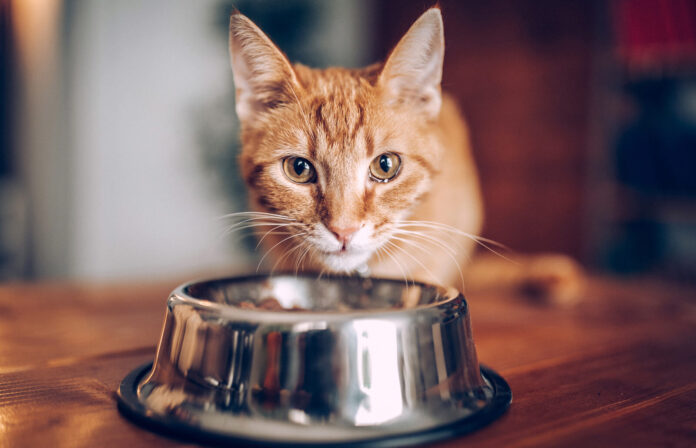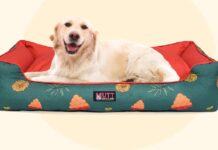Cats are beloved pets that bring their owners joy, companionship, and relaxation. However, choosing the best cat food for your feline friend can be daunting since dozens of options are available in the market. Some pet owners even opt for homemade diets, which can be risky without proper knowledge and guidance.
Here, we will provide some helpful tips and guidelines to ensure your cat gets a balanced and nutritious diet.
Consider Your Cat’s Age, Health, and Lifestyle
Not all cats are the same, and their dietary needs vary based on age, health, and lifestyle. Kitten food is designed for growing cats, while adult and senior cat food is meant for maintenance and aging cats. If your cat has certain health conditions such as obesity, urinary tract issues, or allergies, specialized food formulas can cater to those needs. Additionally, indoor cats may require a different type of diet than outdoor cats due to their lower activity levels.
Look for High-Quality Ingredients
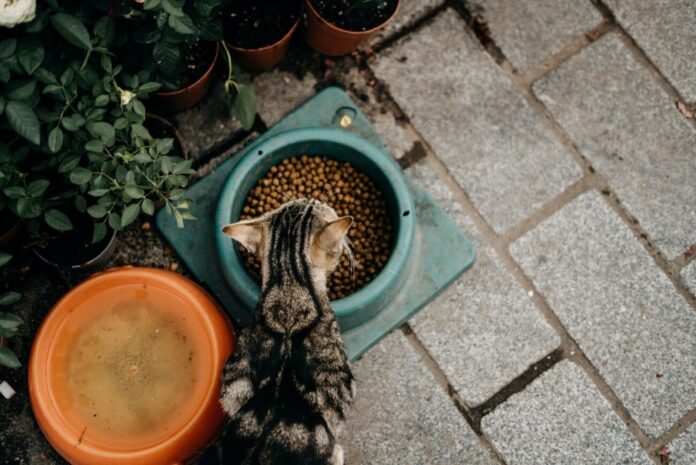
The ingredients that go into your cat’s food can significantly affect their overall health and well-being. A good source of protein, such as chicken, fish, or turkey, should be the main ingredient in your cat’s food. Avoid foods high in carbohydrates, fillers, or artificial flavors and preservatives, as they can contribute to weight gain, digestive problems, and other health issues. Look for food that uses natural and whole ingredients, and avoid anything that includes “by-products” or vague terms like animal meal.
Evaluate the Brand’s Reputation
Many cat food brands are available, and not all of them are created equal. Research the brand’s reputation and history, including any recalls or controversies. Ensure the brand adheres to the Association of American Feed Control Officials (AAFCO) standards and that their food undergoes rigorous testing and quality control. Check online reviews and forum discussions to see if other cat owners have had positive experiences with the brand.
Consider Wet vs. Dry Food
Both wet and dry cat food can provide a balanced and healthy diet for your cat, but they have different advantages and disadvantages. Wet food has a higher moisture content, which can help keep cats hydrated and promote urinary tract health. However, it can also be more expensive and spoil faster. Dry food is more convenient and cheaper and can help keep teeth clean and healthy. However, it can also have lower moisture content and contribute to obesity or digestive issues if over-consumed.
Consider Feeding Schedule and Portions
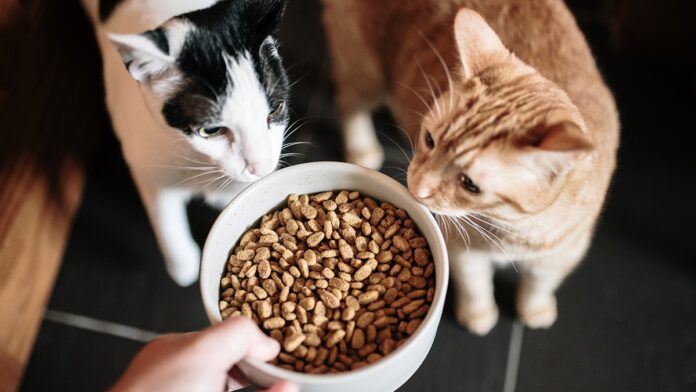
A healthy diet is about what you feed your cat and when and how much you feed them. Establish a regular feeding schedule and stick to it, as cats thrive on routine. Portion control is also important, as overfeeding can lead to weight gain and other health problems. Follow the recommended feeding guidelines on the food package and adjust according to your cat’s age, activity level, and health.
Types of Cat Food
Wet or canned food: This type of cat food is typically sold in cans or pouches and contains a higher percentage of moisture than dry cat food. Wet cat food is an excellent option for cats without water or having urinary tract issues. It is also palatable than dry cat food, making it suitable for picky eaters or aging cats with dental issues. Wet cat food comes in different textures, such as pâté, gravy, and chunks in sauce, and it’s essential to choose one that best suits your cat’s taste preferences and nutritional requirements.
Dry or kibble food: This is the most popular type of cat food and is readily available in pet stores and supermarkets. Dry cat food has a longer shelf life and is convenient to store and serve. It is also affordable and comes in different varieties, such as grain-free, high protein, and weight control. However, dry cat food can lack the moisture content cats need, leading to dehydration or urinary tract problems. Cats that consume dry cat food should have access to plenty of water sources to prevent health issues.
Semi-moist food: This type of cat food is a mixture of dry and wet cat food, and it comes in small, easy-to-serve packets. Semi-moist cat food has a similar texture and aroma to wet cat food, but it’s more convenient to store and serve, making it an ideal option for pet owners with busy schedules. However, semi-moist cat food contains high levels of sugar and salt, which can increase your cat’s risk of developing dental problems and other health issues, so it should be given in moderation.
Raw and homemade cat food: Some pet owners prepare their cat’s food at home or feed them a raw diet. This cat food is made from fresh, uncooked ingredients and contains no preservatives or additives. It is an excellent option for cats with severe food allergies and sensitivities, as it allows you to control the quality and sources of the ingredients. However, feeding raw or homemade cat food poses a bacterial infection risk for both the cat and the owner, and it can be challenging to provide a nutritionally balanced diet that meets all of your cat’s dietary needs.
Prescription cat food: This type of cat food is available with a prescription from a veterinarian and is specially formulated to treat specific medical conditions, such as chronic kidney disease, diabetes, and gastrointestinal issues. Prescription cat food is often more expensive than regular cat food because it contains medical-grade ingredients and a strict nutritional profile. It’s vital to follow your veterinarian’s instructions when feeding prescription cat food to ensure they receive the proper nutrition and treatment for their medical condition.
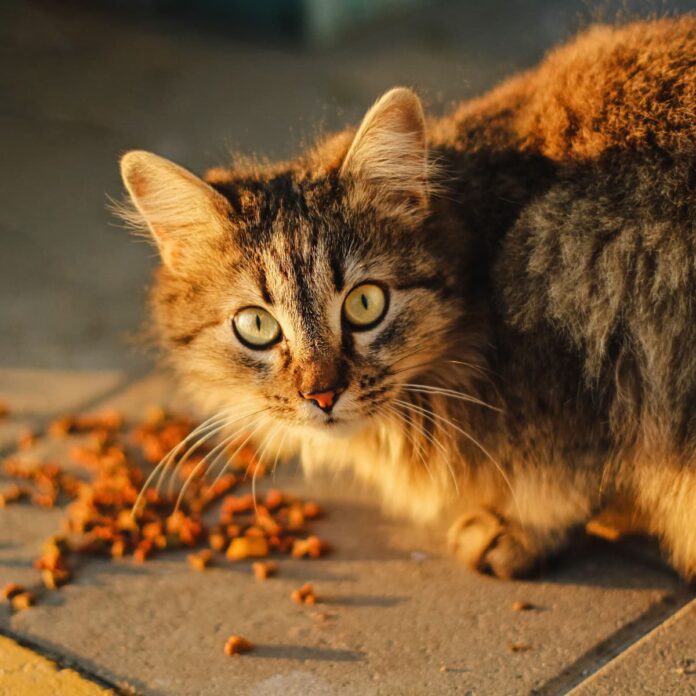
Conclusion
Choosing the right cat food for your furry friend depends on several factors, such as It’s essential to consult with your veterinarian to determine the best diet plan for your cat, taking into account their nutritional needs and lifestyle. Whether you opt for wet, dry, semi-moist, raw, or prescription cat food, always ensure your cat has access to clean and fresh water and regularly monitor their food intake.

